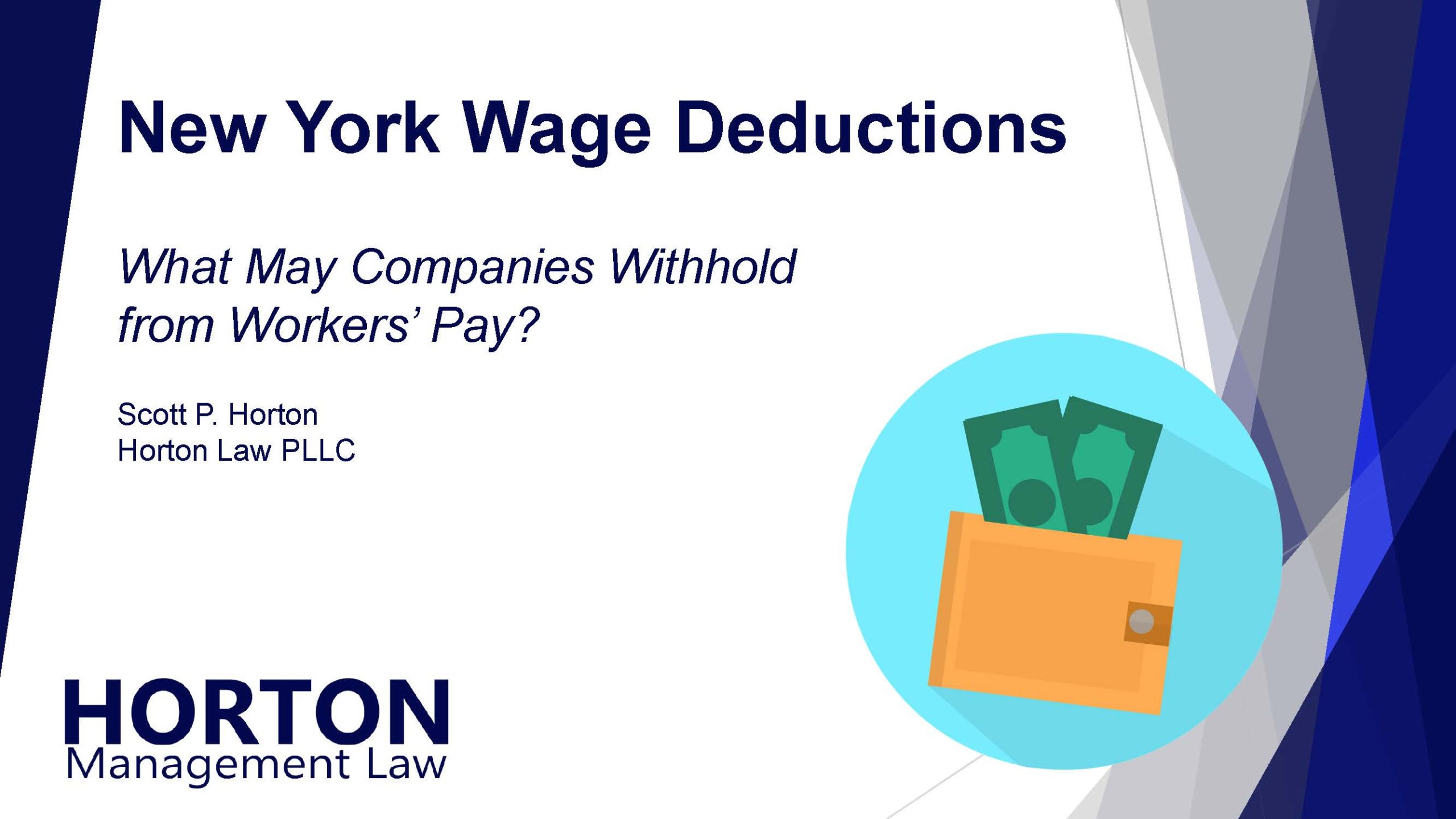The Protecting the Right to Organize Act (PRO Act) was reintroduced in the U.S. House of Representatives on February 4, 2021. The House passed this bill in 2020, but it was dead on arrival in the then-Republican-controlled Senate. As proposed, the PRO Act remains unlikely to win Senate approval this year. However, Democrats will continue to advocate vigorously for its sweeping pro-labor measures.
PRO Act Targets – What Laws Would Change?
The full PRO Act aims to amend several federal labor laws, including the National Labor Relations Act (NLRA) and the Labor-Management Reporting and Disclosure Act (LMRDA).
These laws currently govern the relationship between employers and labor unions in private (non-government) workplaces. They address how employees organize to engage in collective bargaining and things like what public disclosures unions must make about their finances. The NLRA also provides direct protections to employees who are not represented by unions.
Expanding Worker Coverage
The PRO Act includes several measures to expand the NLRA’s rights to more workers. It does this by classifying more workers as “employees.”
Independent Contractors
The NLRA covers “employees,” which is defined to exclude some workers in a workplace. One excluded category includes individuals who are off the employer’s payroll, but still provide services for the company. Often identified by receiving a Form 1099 vs. a W-2 for tax purposes, these workers are considered “independent contractors.”
The PRO Act would expand the universe of employees by further limiting those who qualify as independent contractors.
An individual would only qualify as an independent contractor if all of the following apply:
- The individual is free from the employer’s control in connection with the performance of the service.
- The service is performed outside the usual course of the business of the employer.
- The individual is customarily engaged in an independently established trade, occupation, profession, or business of the same nature as that involved in the service performed.
Supervisors
Recognizing that a business must have a management team to represent it in dealing with unions, the NLRA excludes “supervisors” from the group covered as employees.
Currently, a supervisor is “any individual having authority, in the interest of the employer, to hire, transfer, suspend, lay off, recall, promote, discharge, assign, reward, or discipline other employees, or responsibly to direct them, or to adjust their grievances, or effectively to recommend such action, if in connection with the foregoing the exercise of such authority is not of a merely routine or clerical nature, but requires the use of independent judgment.”
The PRO Act would fundamentally change the definition in two ways. First, it would remove “assign” and “responsibly to direct” from the list of supervisory duties. Second, it would require that one or more of the remaining functions occupy “a majority of the individual’s worktime.” The result would be fewer “supervisors” and more “employees.”
Joint Employers
The National Labor Relations Board (NLRB), which administers the NLRA, has vacillated on its joint employer standard in recent years. The question is whether two separate business entities both qualify as an employee’s employer. Typical scenarios involve staffing agencies and franchised businesses.
With a current Republican majority, the NLRB has returned to a less expansive interpretation of joint employer status. This approach is generally considered good for business and not as beneficial for employees, or at least unions. The PRO Act would codify a broad joint employer standard. A company would qualify as an individual’s employer even with only indirect control or reserved authority to control the work relationship.
Expanding Workers’ Rights
Some aspects of the PRO Act would diminish employers’ control over their businesses by shifting it to the employees.
Strike Replacements
Unless they have contractually waived the right, employees and their unions may strike to gain bargaining leverage with their employers. Under longstanding law, employers have the right to hire permanent replacements for striking workers in many situations. The PRO Act would strip employers of that right to make it harder for companies to operate without striking workers. It would also enable unions to engage in “secondary” picketing, strikes, or boycotts in support of a third-party company’s workers.
Lockouts
The flip side of going on strike, employers may “lock out” their employees (i.e., keep them from working) during contract negotiations. The PRO Act would prohibit lockouts before the union has initiated a strike.
“Captive Audience Meetings”
The NLRA allows employers to hold meetings where they share their views on a union organizing campaign with employees. Attendance may be mandatory, as the employees are being paid, but employers must stay within legal parameters on what they say.
The PRO Act would make such meetings illegal despite continuing to permit unions to meet with employees they seek to organize.
Additional Issues
The PRO Act is an omnibus pro-labor bill. It contains virtually every legal change unions would universally like to have made to the NLRA. Beyond those described above, provisions include:
- Requiring employers to maintain existing terms of employment indefinitely until a first contract is negotiated with a newly recognized union.
- Introducing interest arbitration to establish a first contract, with awards based largely on employee prosperity.
- Making misclassification of an employee as an independent contractor a direct violation of the NLRA.
- Prohibiting class-action litigation waivers.
- Establishing expedited union election rules.
- Enabling the NLRB to overrule election results and direct union representation upon a finding of employer interference in a fair election.
- Permitting employees to use company email for “concerted activity,” including unionizing activity.
- Eliminating “right to work” states by entitling unions to receive “fair share” fees from non-member employees notwithstanding contrary state laws.
- Compelling employers to notify all employees, including new hires, of their rights under the NLRA.
Expanding Penalties
The NLRA has never relied on extensive monetary damages to compel compliance. Instead, it emphasizes legally enforceable “make whole” orders that require employers to take action consistent with the law (or refrain from inconsistent action). The law does, however, require employers to compensate employees for lost earnings and benefits connected to unlawful conduct.
The PRO Act introduces a broader array of financial consequences for unfair labor practices. Borrowing from other employment laws, it would make front pay and consequential damages, as well as liquidated and punitive damages and attorneys’ fees, recoverable. But it goes further than other federal employment laws by authorizing double liquidated damages (additional damages equal to twice the lost wages award) and eliminating the common mitigation requirement (allowing employees to recover wages even that they have already earned through alternative employment).
In addition to damages payable to workers, the PRO Act introduces various civil penalties payable to the government. Penalties could reach $50,000, or $100,000 for a repeat offense or one that involves employee discharge or serious economic harm.
The PRO Act would also enable employees to bypass the NLRB and take their claims of NLRA violation to the courts in many situations.
Persuader Activity Disclosure
By amending the LMRDA, the PRO Act would require employers to engage in broader public disclosure of arrangements with consultants related to labor-relations activities. This expansion aims to include representation by attorneys, potentially curtailing the attorney-client privilege.
Study of Foreign Labor Laws
The PRO Act requires the Comptroller General to complete a study of “the laws, policies, and procedures in countries outside the United States governing collective bargaining at the level of an industry sector, including the laws, policies, and procedures involved in” issues related to collective bargaining. Congress would receive this report in support of considering additional changes to U.S. labor laws. Recognizing that many countries have a structural history of more extensive union involvement in business operations, this reporting requirement aims to yield even more pro-labor amendments.
Employers Beware
Simply put, the PRO Act would radically alter the landscape of American workplaces, as is the intent. The balance of power would undeniably shift toward employees and unions in particular.
The current 50-50 split in the U.S. Senate may keep the PRO Act from becoming law in its entirety. Republicans would almost certainly filibuster the legislation to prevent it from coming up for a vote. However, Democrats will not stop trying to legislate for as many of the PRO Act’s components as possible. They may be able to achieve some through the filibuster-proof reconciliation process and perhaps some even through old-fashion political dealmaking with Republican Senators.
So, while the PRO Act’s enactment is not an imminent certainty, the prospect should keep the business community on alert. If the filibuster falls by the wayside and/or Democrats gain a larger majority in Congress, these dramatic labor changes could become a stark reality.
For more labor and employment law updates, sign up for the Horton Law email newsletter and follow us on LinkedIn.


